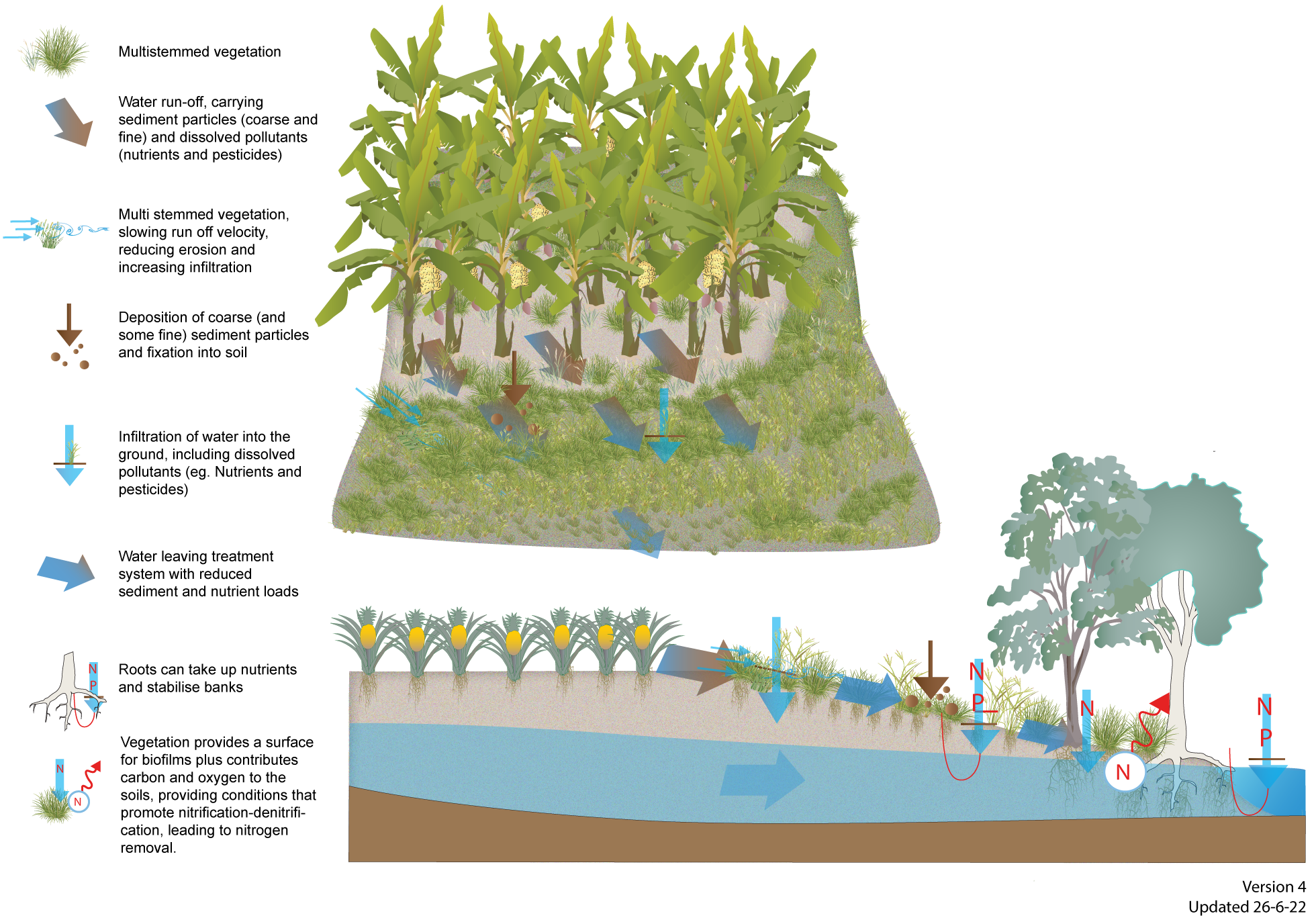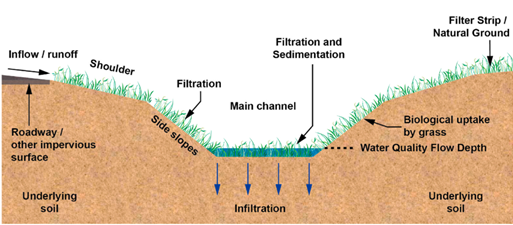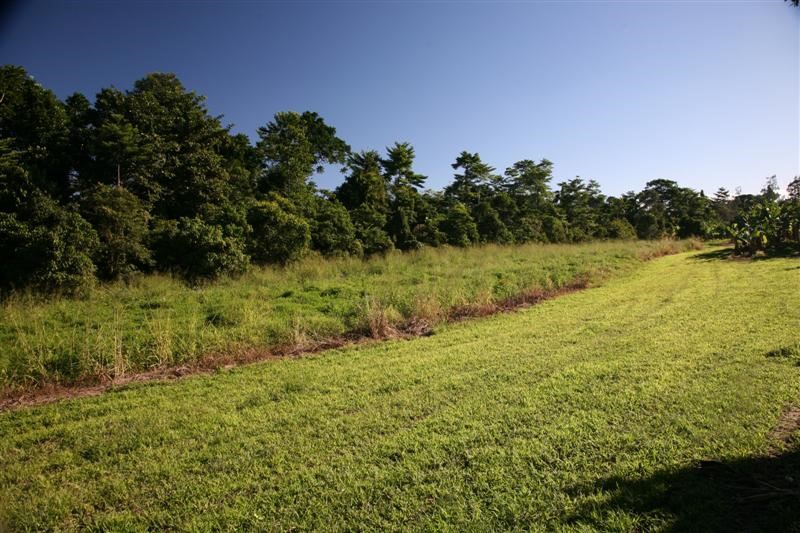|
|
Vegetated buffers and swalesVegetated buffers and swalesSelect from the tabs below Other name/sVegetated buffers and swales, filter strips, riparian buffers DescriptionVegetated buffers and swales for agricultural water quality improvement are drainage features that separate an agricultural production area from a waterway or wetland. Buffers are usually located perpendicular to water flows whereas swales are located parallel to the flow and convey water in a drainage line (as shown in the diagrams above). The difference between swales and drains, is that swales are dry most of the time whereas drains hold water for longer periods. Vegetated buffers and swales are often used as a best management practice tool in agricultural production systems to prevent erosion, such as a grassed interrow or headland. They can have a secondary benefit as a treatment system by slowing water flow and depositing coarse sediment and some nutrients, although their effectiveness in treating agricultural run-off varies depending on site conditions and their design and management[6][7]. Buffers can be efficient at removing nitrogen from groundwater[5], but efficiency is strongly influenced by specific site characteristics, such as groundwater flow paths and soil saturation[5][3] Nitrogen can also be transformed through various processes in a buffer or swale, depending on water flow through the system which will vary seasonally. Most of the content on this webpage focuses on removal of sediments or sediment-bound nutrients in surface run-off. Figure 1 Grass swale cross section showing processes for removing pollutants[2].
Vegetated buffers and swales help protect wetlands and waterways from the impact of adjacent land uses and can also protect agricultural land from flooding and bank erosion. Swales typically contain grass. Buffers can be vegetated with native plants including sedges, grass, trees or shrubs and the type of vegetation influences the services that buffers can provide. A grass buffer located immediately adjacent to a cropping area has been shown to be more effective than trees for treating run-off while deep rooted trees in the riparian area are more effective for bank stabilisation[7][1]. A buffer with grass closest to the agricultural production area and trees adjoining the receiving environment could therefore help achieve multiple water quality, bank stabilisation and habitat benefits (Figure 1). For more information on the different buffer designs and principles for different services or benefits, refer to the Queensland Wetland Buffer Planning Guideline.
When used as a treatment system, vegetated buffers and swales work by increasing the roughness of the ground surface and therefore increasing friction, which slows the water and allows settling of coarse to medium sediments and some particulate nutrients and pesticides. By slowing the flow velocity, water is given more opportunity to infiltrate into the soil. Infiltration of water into the soil is the most efficient way for vegetated structures to assist in removal of finer sediments (e.g. less than 40μm (microns) in diameter), nutrients and pesticides[4]. In some cases, pollutants can also be removed through adsorption to the plant or soil material[7] or uptake by vegetation[8]. Vegetated buffers and swales are best positioned as one of the first components in a treatment train to prevent erosion and enable trapping of coarse to medium sediments prior to run-off entering other treatment systems. They provide an important pre-treatment function for other elements in a treatment train.
Services and benefits
While buffers can provide many services the focus of this content is on water quality improvement DisclaimerIn addition to the standard disclaimer located at the bottom of the page, please note the content presented is based on published knowledge of treatment systems. Many of the treatment systems described have not been trialled in different regions or land uses in Queensland. The information will be updated as new trials are conducted and monitored. If you have any additional information on treatment systems or suggestions for additional technologies please contact us using the feedback link at the bottom of this page. References
Last updated: 5 November 2022 This page should be cited as: Department of Environment, Science and Innovation, Queensland (2022) Vegetated buffers and swales, WetlandInfo website, accessed 8 May 2025. Available at: https://wetlandinfo.des.qld.gov.au/wetlands/management/treatment-systems/for-agriculture/treatment-sys-nav-page/vegetated-buffers/ |

 — Department of the Environment, Tourism, Science and Innovation
— Department of the Environment, Tourism, Science and Innovation






